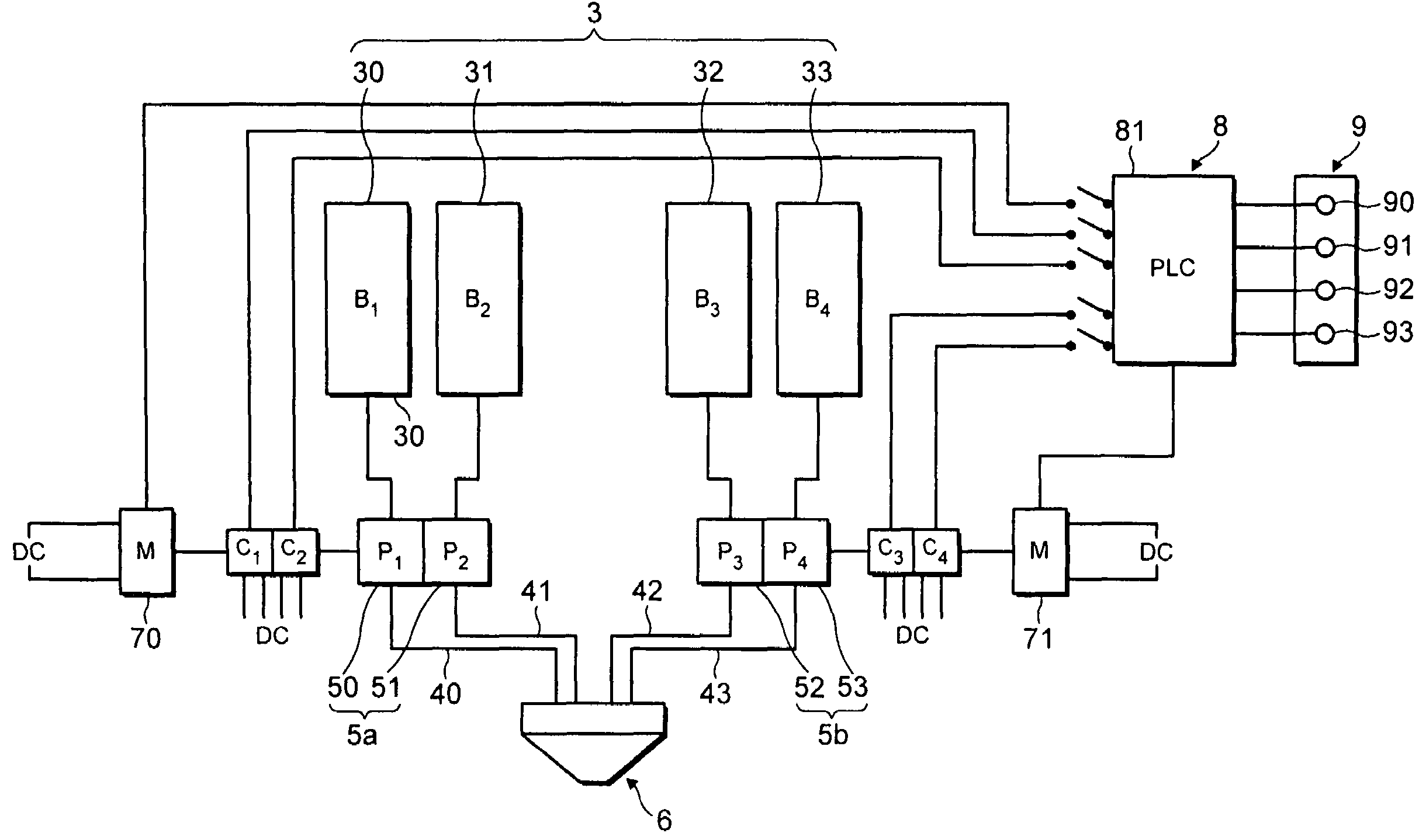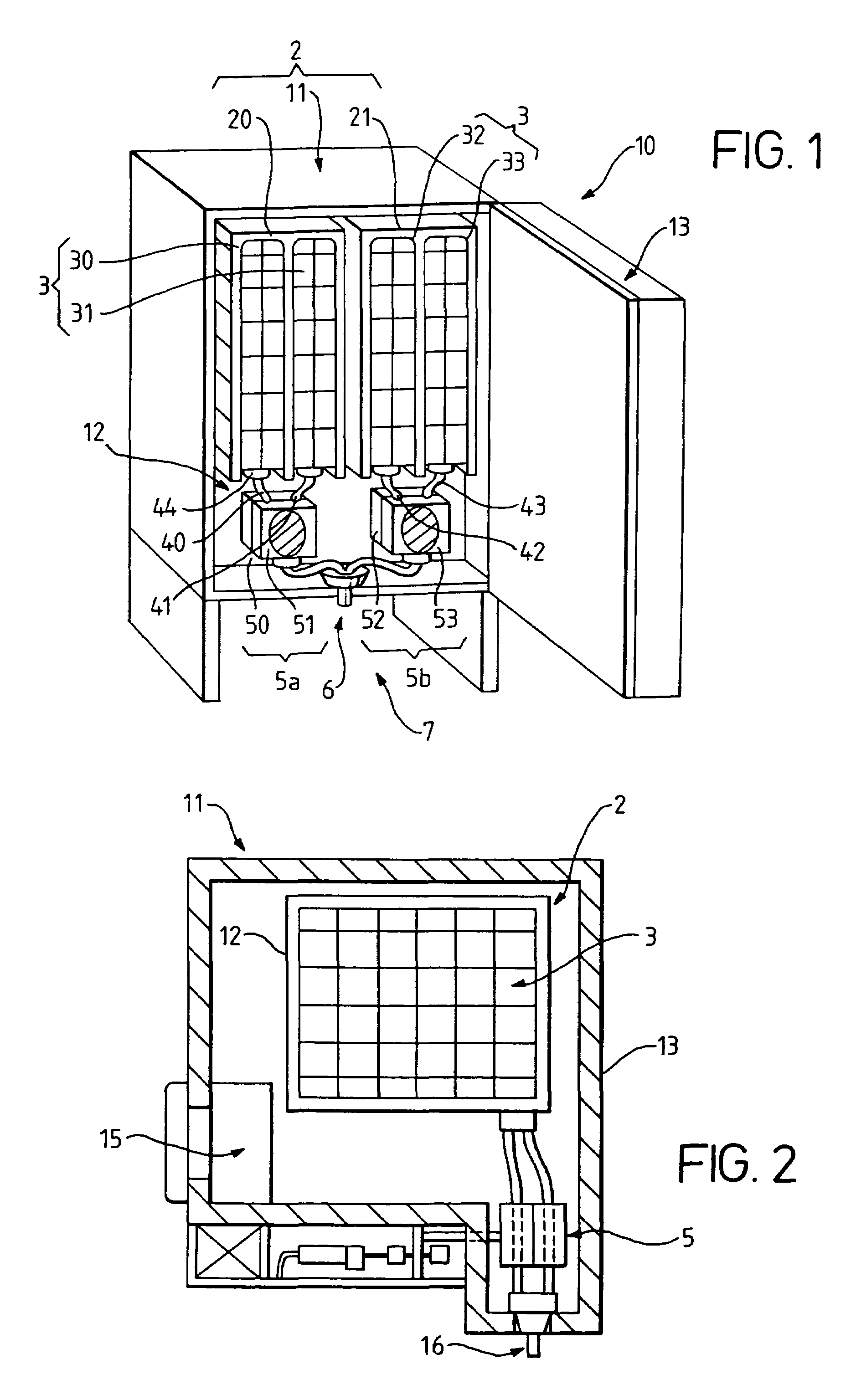Device and method for on-demand dispensing of spoonable or drinkable food products having visual appearance of multi-components
a multi-component, spoonable technology, applied in the direction of liquid transfer devices, liquid handling devices, packaging goods types, etc., can solve the problems of poor nutritional offer, lactose intolerant people's hard time digesting milk products, and inability to properly direct the food components in the container, so as to minimize the cross contamination of food components that could alter the desired product pattern in the cup, the effect of reducing the number of maintenance and cleaning
- Summary
- Abstract
- Description
- Claims
- Application Information
AI Technical Summary
Benefits of technology
Problems solved by technology
Method used
Image
Examples
example 1
Recipe for Co-Dispensed Fruit and Yogurt “Mini-Layered” Product
[0099]The product as shown in FIG. 9 was automatically dispensed by the dispensing device of the invention. A typical spoonable plain yogurt component packaged in 10-liter flexible package with an attached hose and a strawberry fruit sauce package in the same type of package (but 5-liter capacity) were stored in the refrigerated cabinet of the device. The components' storage capacity may be determined depending upon relative percentage usage level. The yogurt product can be any commercially available yogurt of the typical texture and consistency as found in refrigerated cup yogurts. The yogurt had a specific gravity of about 1.0 gram / cm3 and a viscosity of about 40,000 centipoise (Broofield viscometer, penetration method, 5 RPM, using spindle number 93, between 3-5° C.). The strawberry fruit jam or preserve type with a specific gravity of about 1.25 gram / cm3 and Boswick flow properties of about 6.5 Boswick-scale units at...
example 2
Recipe for “Parfait” Layered Product
[0100]The product was dispensed according to the same ingredients as for example 1 and in the same dispensing device.
[0101]When a button actuating the specific product recipe is pushed, the machine automatically sequences:[0102]a) Pumping yogurt from yogurt bag for a period of 1 second followed by a 0.5 seconds pause;[0103]b) Pumping fruit sauce for a period of 3.5 seconds followed by a 1 second pause;[0104]c) Re-do sequence a) identically;[0105]d) Pumping fruit sauce for a period of 4.5 seconds followed by a 1 second pause;[0106]e) Pumping yogurt for a period of 2.5 seconds and stop.
[0107]The automation is provided by the PLC unit having appropriate circuits to receive the input / output data and that comprises a stored ladder program for the above cycle usually via a software that is stored in a memory area of the PLC unit. The programming of the ladder program adapted to the above cycle is deemed to be within the normal skills of a specialist in ...
PUM
| Property | Measurement | Unit |
|---|---|---|
| width | aaaaa | aaaaa |
| width | aaaaa | aaaaa |
| viscosity | aaaaa | aaaaa |
Abstract
Description
Claims
Application Information
 Login to View More
Login to View More - R&D
- Intellectual Property
- Life Sciences
- Materials
- Tech Scout
- Unparalleled Data Quality
- Higher Quality Content
- 60% Fewer Hallucinations
Browse by: Latest US Patents, China's latest patents, Technical Efficacy Thesaurus, Application Domain, Technology Topic, Popular Technical Reports.
© 2025 PatSnap. All rights reserved.Legal|Privacy policy|Modern Slavery Act Transparency Statement|Sitemap|About US| Contact US: help@patsnap.com



